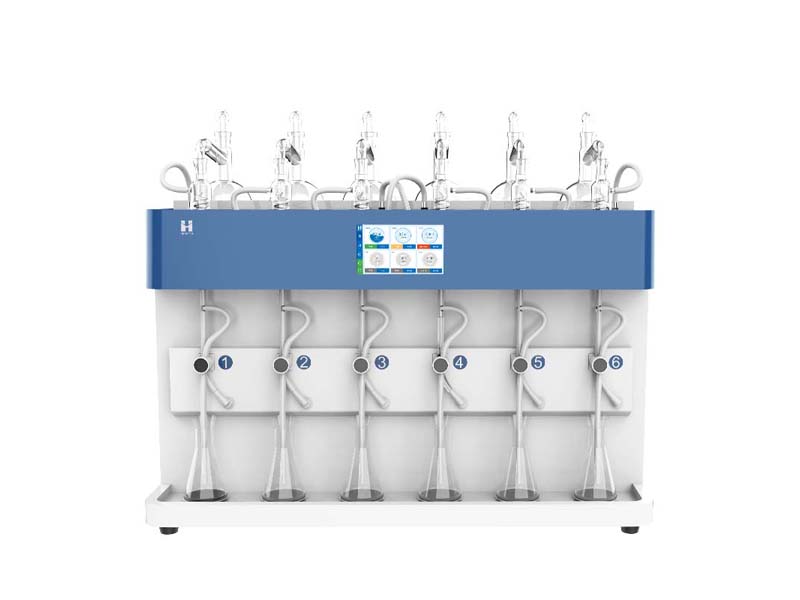In the field of laboratory analysis, distillation is a basic and crucial pre-treatment step, which is widely used in water quality testing, food safety, soil analysis and other fields. However, the traditional distillation device is designed independently for heating, condensation, receiving and other components, which is complicated to operate, inefficient, and has frequent failures. It is also difficult to accurately control the heating temperature and the distillation end point, resulting in poor parallelism of experimental results and low recovery rate. These problems have long plagued laboratory staff. The emergence of the distillation instrument has brought positive effects to laboratory distillation experiments.

I. The importance of the distillation instrument
The distillation instrument integrates functional modules such as heating, condensation, and receiving into one through an integrated design, realizing the automation and intelligence of the distillation process. It not only simplifies the operation process and improves work efficiency, but also ensures the accuracy and repeatability of experimental results through precise temperature control and intelligent end point judgment, saving a lot of manpower and time costs for the laboratory.
II. Working principle and technical advantages
The distillation instrument adopts an intelligent modular design, and its core lies in its advanced control system and efficient heating and condensation technology. The equipment is equipped with a 7-inch LCD touch screen. Users can customize the distillation method and save it. The next time the machine is turned on, it can be directly called, which greatly facilitates the experimental operation. The heating module adopts a standard bowl-shaped glass fiber electric heating jacket heater to ensure that the sample container fits tightly with the heat source, achieving uniform and efficient heating, fast distillation speed and long service life.
The condensation unit adopts a specially customized serpentine condenser, which effectively improves the condensation efficiency and reduces the loss of distillate. At the same time, the equipment has multiple protection functions such as anti-backflow, anti-excess distillation and anti-dry burning to ensure the safety and stability of the experimental process. The distillation endpoint control adopts a dual mode of time and weight. When the distillation result reaches the preset value, it automatically stops heating and cuts off the distillate pipeline to achieve true unattended operation.
III. Application fields and solutions
The distiller is widely used in many fields such as water quality testing, food safety, soil analysis, etc., and complies with a series of national standards such as GB/T 5750.5-2023 and HJ 484-2009. In water quality testing, it can be used to determine indicators such as volatile phenols, cyanide, and ammonia nitrogen; in the field of food safety, it can be used to detect cyanide, ethanol concentration, and methanol content in food.
The distiller provides solutions to the pain points in laboratory distillation experiments, such as cumbersome operations, low efficiency, and inaccurate results. Through automated and intelligent design, it greatly simplifies the operation process and improves work efficiency; through precise temperature control and intelligent endpoint judgment, it ensures the accuracy and repeatability of experimental results; at the same time, its multiple protection functions also ensure the safety and stability of the experimental process.
Article address:http://www.labinstruments.net/news/57.html







